Some days ago I suddenly lost hot water. I turned the hot water faucet on and nothing happened. I don’t mean that there was water but it wasn’t hot. I mean that nothing happened. No water at all.
After indulging in a moment of WTF, I did a bit of troubleshooting. Is it the faucet? Nope, it’s the same at all of the hot water faucets, yet all of the cold taps work. So, the problem is somewhere in the hot water supply, after it separates from the cold water input. That happens at the water heater. (An aside, I really, really, really hate when people say “hot water heater”. You don’t heat hot water. You heat cold water to make it hot.)
Either there is no water coming out of the water heater, or there is a block in the line after the water heater but before it splits to feed the various sinks. That split is actually right after the hot water exits the water heater, where there is a split with one side feeding the kitchen sink and another going to the rear of the AdventureMobile to feed the bathroom sinks and shower.
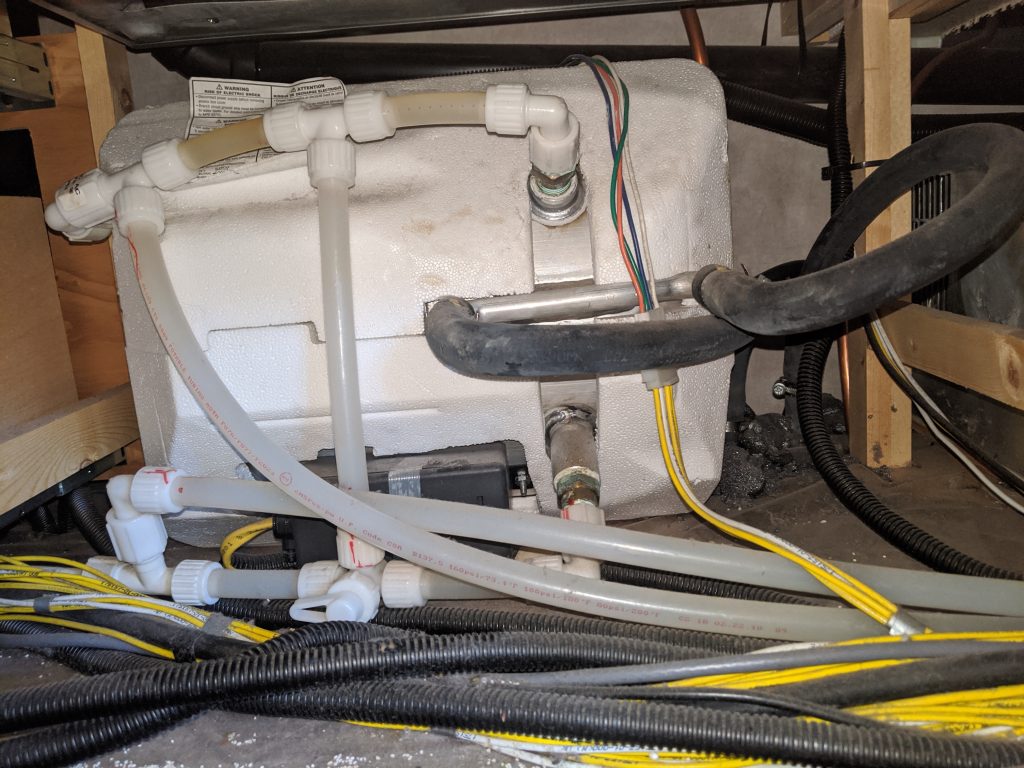
– First, you can see that there are two openings into the water heater tank. The bottom one is where cold water goes into the tank. The top one is where hot water comes out. Hot water rises so the hottest water is at the top.
– Those two black hoses come from and return to the engine cooling system. While driving down the road hot water circulates from the engine and passes through that little heat exchanger where it warms the water in the tank, so I have hot water for washing my hands and such while traveling. My ex even tried taking a shower while we were going down the road once.
– That vertical piece of pex in the center is the water heater bypass. You can see the handle for the ball valve where it joins the cold water feed at the bottom. There is no ball valve at the top because there is a check valve screwed into the hot water outlet to prevent water flowing into the water heater. Water can only flow out. Unfortunately, I didn’t know this when this all started.
In an RV, there is a way to isolate and bypass the water heater. This is mainly used when winterizing the water system for storage. So I turned the bypass valve and sure enough, I had cold water at all the hot water taps. This confirmed that the issue was at the water heater. The only thing I could think of is that somehow the outlet of the water heater was being blocked with sediment.
Now folks with experience dealing with RV water systems are all screaming at their computer screens right now. “No! No! It’s the…” But at the time, that’s all I could think of.
So I shut off the water heater, let it cool down, and went outside where I removed the plug and flushed the water heater out. And I did indeed remove a lot of sediment. A surprising amount of sediment, since I had last flushed it last summer. And sure enough, once I reinstalled the plug and refilled the water heater, I had water at all of the hot water faucets. Pleased with myself for this demonstration of troubleshooting prowess and repair abilities, I went about my day.
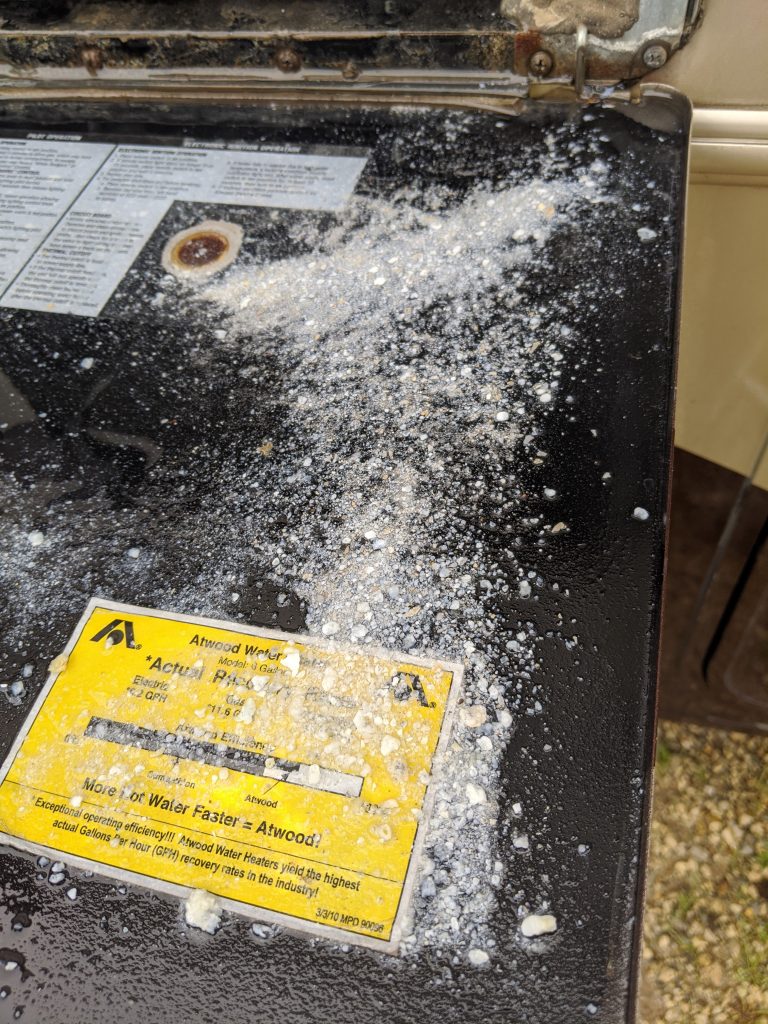
But of course that wasn’t the end of it. A few days later I turned the hot water on to fill the sink to do dishes and… nothing! Really? Another WTF moment. I heated water on the stove to do the dishes, and while doing that chore I thought about what was going on. There is a ball valve to divert the cold water going into the water heater to go around it instead, but there is no ball valve on the output from the water heater. Well, there has to be something to prevent water from simply filling the water heater from the outlet, so there must be a check valve.
After finishing the dishes I did quick search on irv2.com — a great resource for RVers — and sure enough there is a check valve, aka a back-flow preventer, on the output of the water heater, and these valves are apparently a frequent failure point. By this time the hot water was working again, so obviously this check valve is sticking sometimes and working other times. I ordered 2 new valves from Amazon, since it’s always good to have a spare, and they’re cheap.
The next day I got to work. After shutting off the water heater and letting it cool, again I went outside and removed the drain plug to drain the water heater. Then I removed the fitting that attaches the pex to the water heater output, and that left me facing the check valve. This is the part I was worried about, as I had read several tales of these being really difficult to break loose. Somebody even said they broke one trying to remove it and had to pull the entire water heater out in order to work on it and remove the broken piece. But I was lucky. I put a long wrench on it and gave it a couple of good tugs and it broke loose. Soon I had it out. And then I had my first set-back. The replacement valves I had ordered were male/female thread, and the one I had just removed was male/male. Oh crap!
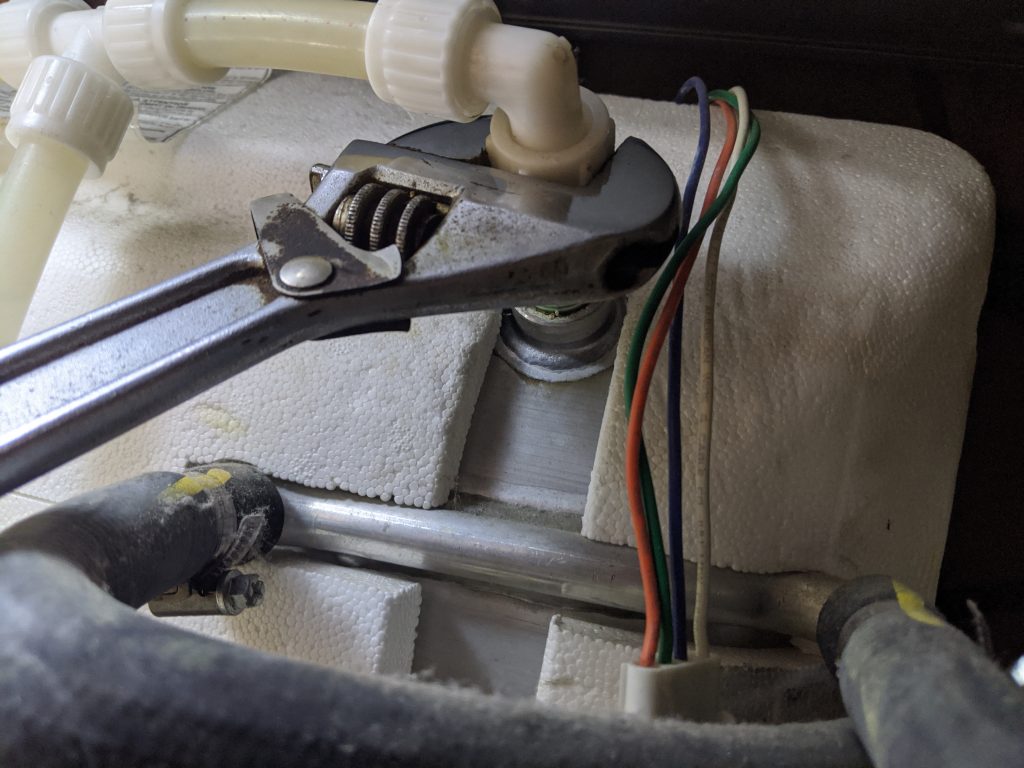
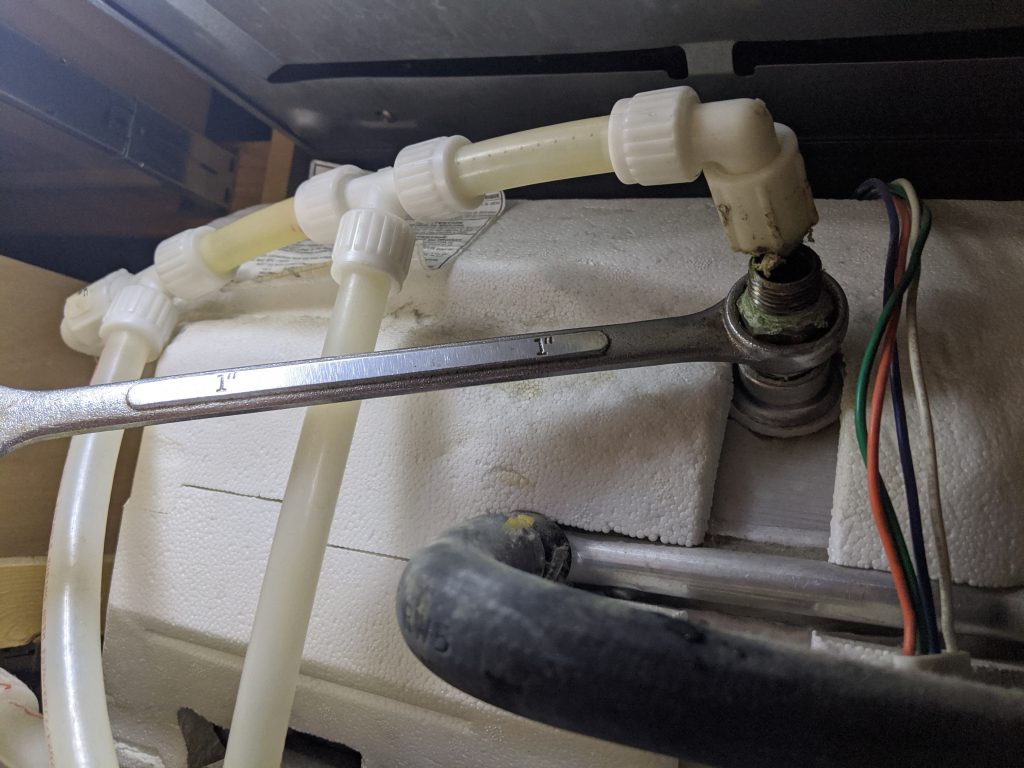
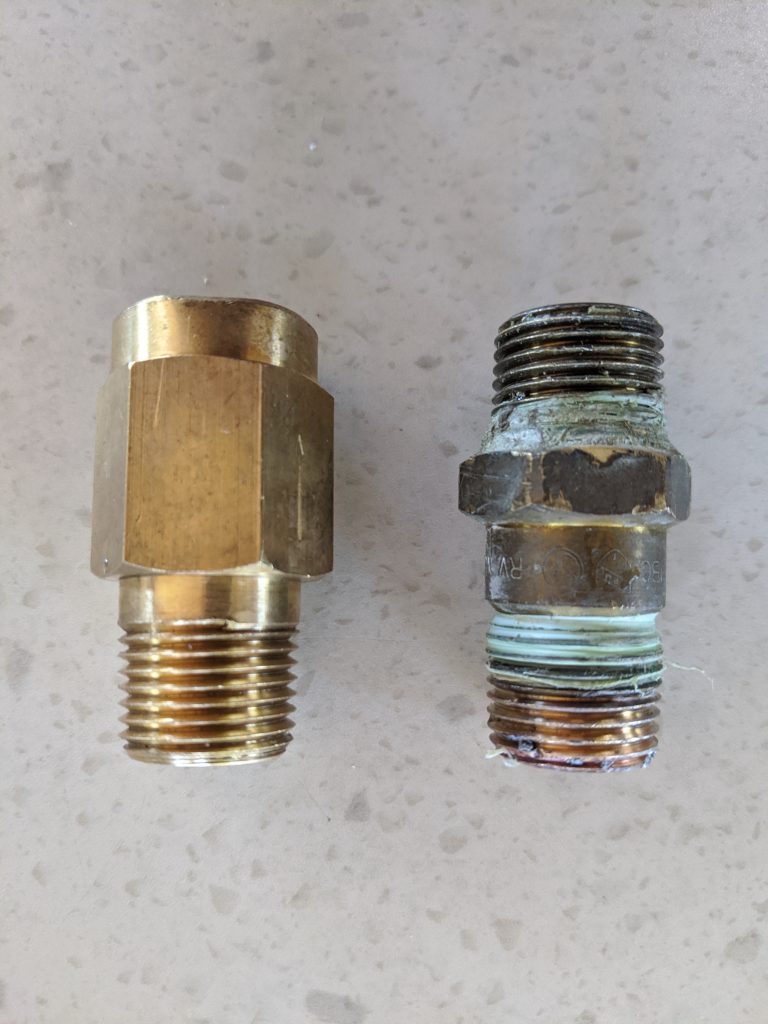
The water in the RV was completely shut off, so I needed a solution. So I looked at the valve I had just removed. Sticking my finger inside, the little plastic valve popped right out and left me with a straight through piece. Sorted!

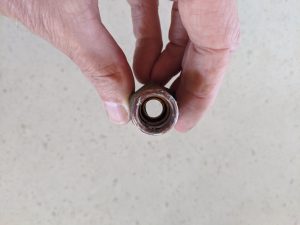
So, I put some teflon tape on the threads and reinstalled the old valve, reconnected the water line, reinstalled the outside drain plug, and refilled the water heater. After checking for leaks, I buttoned everything back up.
I’ve ordered the correct replacement valve and at some point I’ll have to do the job again to have a correctly functioning check valve in place, but for now it’s all working and I once again have hot water.
